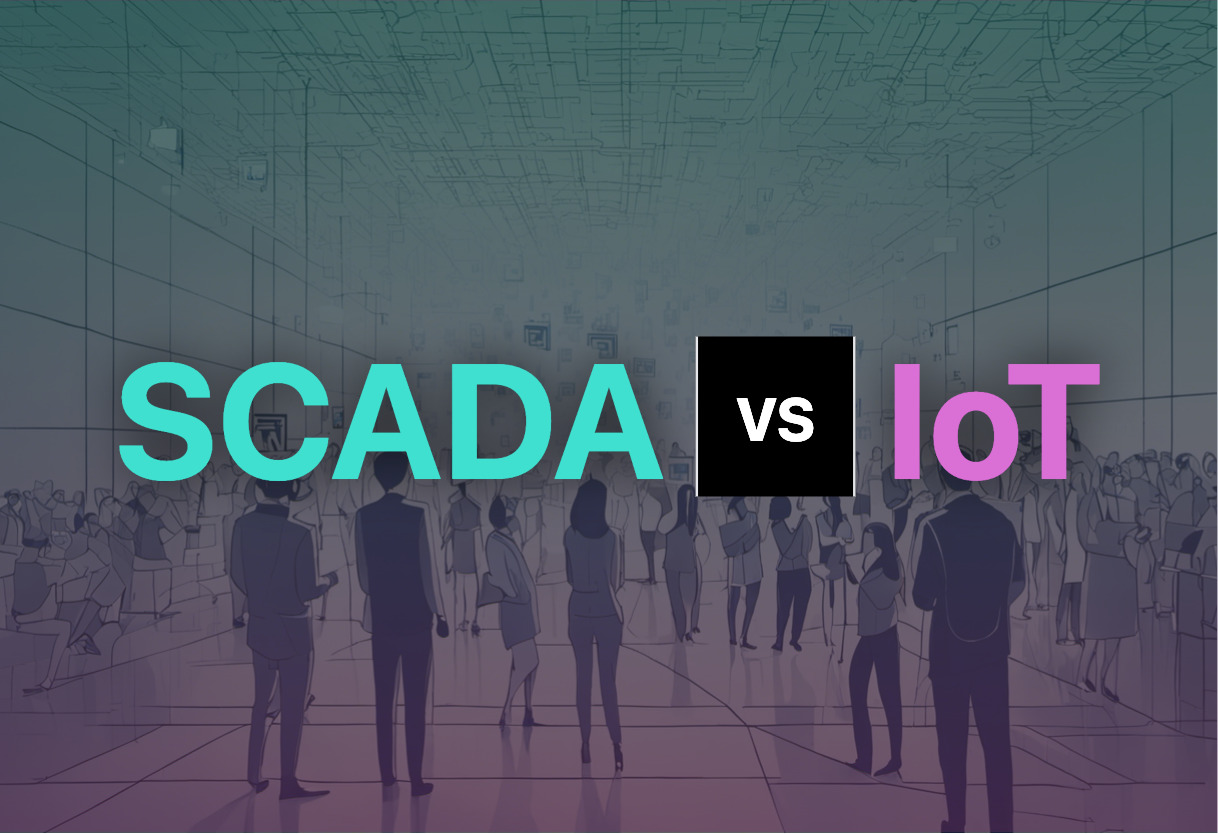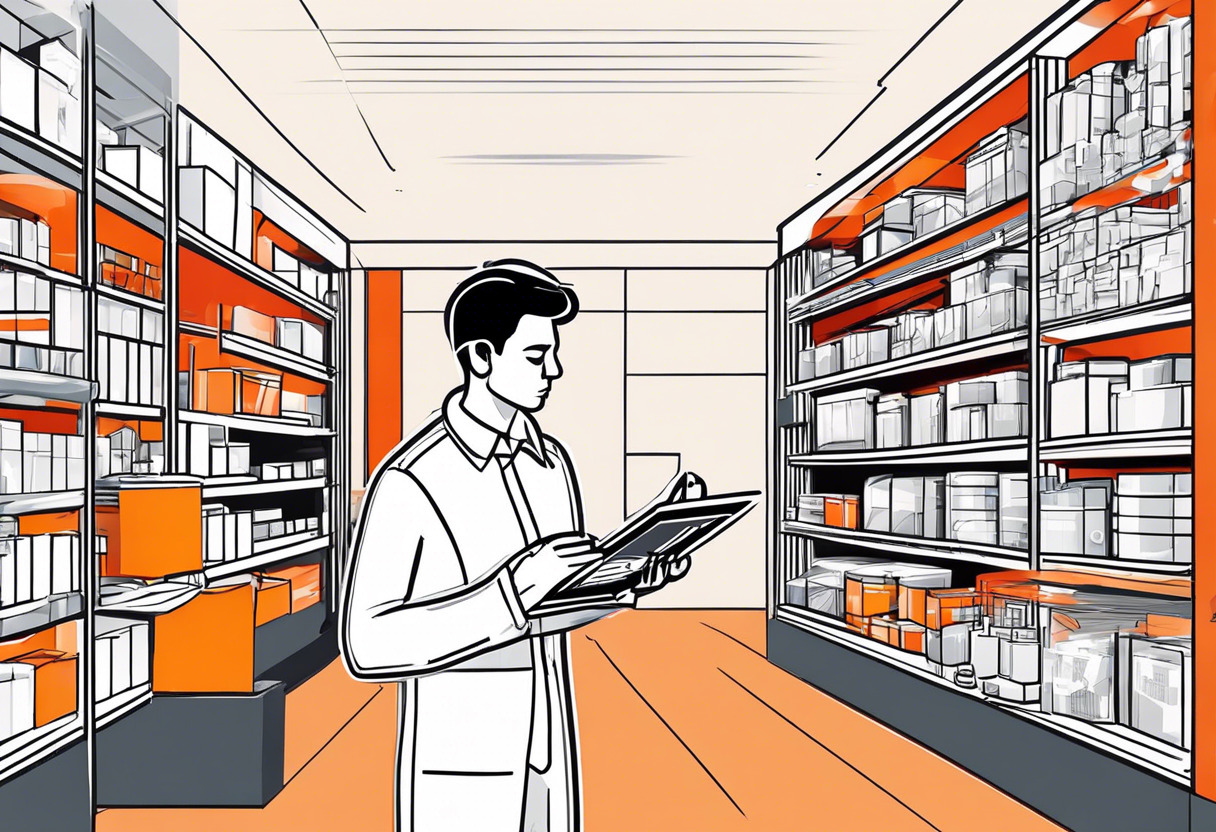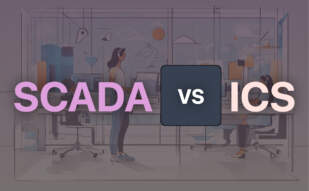If you’re focused on robust process automation, real time control, and operational security, opt for SCADA. However, for a data-driven, interconnected, and versatile solution, IoT stands unrivalled. It’s all about your specific industrial or consumer needs.

Key Differences Between SCADA and IoT
- Operation: SCADA focuses on control and monitoring at the supervisory level, IoT is about data exchange and connection between devices.
- Components: SCADA employs RTUs, sensors, control relays, IoT uses microcontrollers, sensors, and varied communication protocols.
- Application: SCADA is preferred for industrial processes, water and waste control, IoT finds extensive use across industrial, consumer, healthcare, logistics sectors.
- Future Direction: SCADA is expected to integrate 5G, quantum computing, AI, IoT is rapidly expanding with ML applications, automation, new business models meteoric rise in interconnected devices.
- Security: SCADA has concerns with cybersecurity, IoT offers enhanced security by tracking device behaviour, limiting access.
| Comparison | SCADA | IoT |
|---|---|---|
| Functionality | Monitors and controls plant or equipment at supervisory level. Automates complex industrial processes, measures trends over time. | Network of devices with embedded sensors, software, exchanging data over internet. Enables smart manufacturing, connected assets, preventive maintenance, smart grids, smart cities, connected logistics, digital supply chains. |
| Components | Remote Terminal Unit (RTU), sensors, control relays, SCADA master units, communication channels, Input/output signal hardware, Human-Machine Interface (HMI), controllers, communication, database, software. | IoT devices with sensors and connectivity. Microcontroller as a brain, Input/output control interface, IoT control center, Connectivity management via IoT control center. |
| Use Areas | Industrial plants, water and waste control, energy, oil and gas refining, transportation, telecom. | Industrial settings, manufacturing, automobiles, transportation, logistics, retail, public sector, healthcare, home automation, energy companies. |
| Advancements | Modern SCADA uses SQL databases, rapid application development (RAD) capabilities. Future incorporation of 5G networks, quantum computing, edge computing, artificial intelligence, and machine learning. | IoT leverages low-cost sensors, connectivity, cloud computing, machine learning, AI. Future dominated by IoT devices, networked devices expected to far exceed networked computers and workstations. |
| Risks | Cybersecurity concerns with more connected and integrated systems. | Emphasizes on tracking device behavior, limiting access to enhance security. |
| Benefits | Control of industrial processes locally or remote locations, record events into a log file, improve accessibility to data and controls. | Enhancement in efficiency and safety in logistics, remote patient monitoring in healthcare, automates and monitors systems in smart cities, used for machine and product quality monitoring in manufacturing, assists in inventory management, customer experience, supply chain optimization in retail. |
What Is SCADA and Who’s It For?
SCADA, or Supervisory Control and Data Acquisition, is a computer application designed to monitor and control plant or equipment at a supervisory level. The technology serves as a centralized control system for an overarching network, automating complex industrial processes and correcting problems while keeping track of trends over time. Industries such as industrial plants, water and waste control, energy, oil and gas refining, and transportation rely heavily on SCADA’s capabilities.
This powerful platform is particularly useful for professional entities that require tight control over their complex operational processes. These could include organizations within the energy, manufacturing, oil and gas, recycling, transportation, and water and wastewater sectors, to name a few.

Pros of SCADA
- Automates and controls complex industrial processes
- Capable of monitoring an entire network
- Trends measurement over time
- Potential for expansion with future technologies
- Highly used in a wide range of industries
Cons of SCADA
- May generate high long-term costs
- Cybersecurity threats with more integrated systems
- Legacy systems may lack scalable, interoperable models
- Support for older SCADA systems can be limited
What Is IoT and Who’s It For?
IoT, or the Internet of Things, refers to a vast network of interconnected devices equipped with embedded sensors and software that exchange data over the internet. These devices, thanks to advancements in low-cost sensors, connectivity, cloud computing, machine learning, and AI, find application in various fields such as manufacturing, logistics, retail, healthcare, transportation, public sector, and much more.
The technology is meant for those in industries that can capitalize on device-to-device communication and data generation, such as connected cars in the automotive industry, wearable health devices in healthcare, home automation devices for consumers, or remote assets monitoring in an industrial setting.

Pros of IoT
- Serving a wide range of industries
- New possibilities for automation and revenue-business models
- Enables the creation of new experiences for consumer market
- Benefits from Machine Learning and AI-based analytics
Cons of IoT
- Need for continuous monitoring
- Security concerns with increased connectivity
- Development and management can be complex
- Certain sectors may face significant adoption barriers
A Final Verdict: SCADA or IoT?
Given the information on both SCADA and IoT, what’s the final call?
For Industrial Plant Managers
SCADA will likely serve you better with its proven capabilities in monitoring, controlling, and automating complex industrial processes, detecting, and correcting issues. Its components such as RTUs, sensors, control relays, HMI’s all contribute to an efficient handling of operations in industries like manufacturing, energy, oil and gas refining.
For Health and Retail Sectors
IoT shines through with its smart features, enabling wearable health monitors, simplifying inventory management, optimizing the supply chain, improving customer experiences. IoT redefines boundaries by connecting multiple devices to indicate human health analytics or retail logistics.
Innovators in Transportation and Logistics
SCADA and IoT both serve this sector well, but the tipping scale might be in favour of IoT due to its capabilities for smart grids, connected logistics and digital supply chains. Real-time monitoring and communication enabled by IoT makes it a preferable tool for fleet management.
For Home Automation
Undeniably, IoT has carved its niche in the realm of home automation. From lighting, home security to heating and air conditioning, everything can be efficiently controlled via IoT devices. Therefore, IoT gets the upper hand for this segment.
In conclusion, IoT and SCADA both are transformative technologies with extensive industrial applications. The choice depends on specific use-cases, user requirements and operational contexts. Understand the architecture, evaluate with caution, and select the system that best aligns with your objectives. It’s not always a matter of choosing, but harnessing the right technology at the right place and at the right time.
Grant Sullivan
Content writer @ Aircada and self proclaimed board game strategist by day, AI developer by night.





